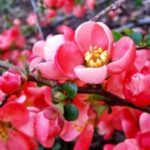20 things not to do when growing a garden
Growing a thriving garden is as much a result of the things you do as it is of the things you don’t do. Here is a list of what NOT to do in order to have a thriving garden. These are all things I learned from personal experience, and they set me back a few years:
1. Planting roses in the shade.
2. Hard pruning roses that should not be pruned.
3. Forgetting that the dirt will be impoverished if the nutrients are not replenished with natural fertilizers. Feed, rotate crops or both.
4. Digging holes too small for the root ball of the plant. It is an easy mistake to make if you have to dig through rock hard clay in shallow flower beds. Make the extra effort, you will see a tremendous difference.
5. Not preparing the soil before planting seeds. Till, mince, feed, weed, water.
6. Not watering the soil enough for the seeds to germinate.
7. Putting off weeding will give you seven times more work than you should normally have.
8. Planting plants in the wrong places.
9. Not abiding by tried and true gardening methods (tomatoes need staking, grapevine needs pruning, etc.)
10. Not watering enough during droughts. (if the plants look wilted, watering twice a day is not excessive).
11. Giving up on planting the right plant in the right location because of initial failure.
12. Confusing the different types of shade (dappled shade is different from dry shade and from north foundation shade).
13. Not dividing perennials on time.
14. If you really want to grow edibles do not assume that the rabbits and squirrels will leave them alone for your sake, protect them.
15. Planting invasive perennials.
16. Being afraid that moving a suffering plant will hurt it further. Trust me, if a plant is not doing well where it is, move it. The benefits are visible within days!
17. Ignoring deadheading. Many plants, like basil and calendula will die after they went to seed. If you would like to have them for the whole season, don’t let them go to seed.
18. Not labeling newly started seedlings. I can’t tell you how many perennials I pulled out with the weeds when they were too small to recognize. Knowing exactly what they are supposed to look like before they bloom doesn’t hurt either.
19. Over fertilizing.
20. Buying, buying, buying. It takes a little patience to wait on seedlings that you started yourself or divided plants or cuttings to mature, but the benefits multiply ten times over because this is the gift that keeps on giving. In addition to that, plants that thrive in an area of your garden have a better chance to thrive in another area of your garden (same soil, similar conditions). Buy for diversity and interest, don’t buy as a quick fix for barren areas. Plan what you want to plant in advance, don’t buy on impulse. Don’t buy plants with lots of blooms, you want them to bloom in your garden, not the garden center. This one is hard to resist, I know, I just thought I’d mention it.




 Previous Post
Previous Post Next Post
Next Post





Hmm.. Okay. Got some garden tips there. Nice one. Didn’t expect to learn something new from this All Year Garden: tips and advice for an organic kitchen garden. Preserves, herbal home remedies. article. So, thanks! 😛
If you don’t mind, since you talked about gardening bits there, I wrote a gardening article myself at my blog here: http://www.growinggardening.com/potato-diseases-problems-when-growing-potatoes/. Tell me what you think and comment there. Appreciate it!
Tina Gail the Gardener 🙂
Great information. Thank you for sharing it. I’ll visit often.
What a fantastic web log. I invest hours on the net reading blogs, about tons of many subjects. I have to initially of all give praise to whoever developed your theme and second of all to you for writing what i can only describe as an fabulous article. I honestly believe there is certainly a skill to writing articles that only really few posses and honestly you got it. The combining of demonstrative and upper-class content is by all odds super rare with the astronomic amount of blogs on the cyberspace.